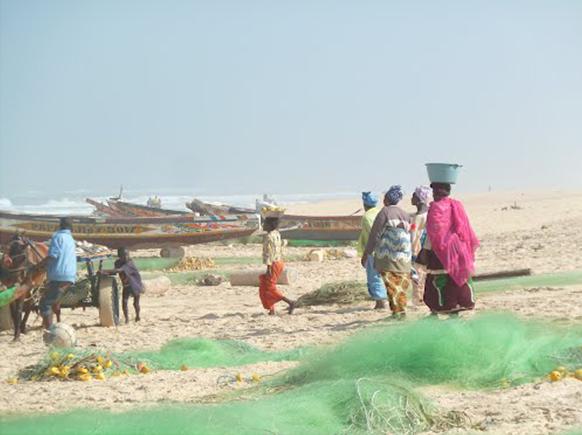Osprey Diary 9th May & Osprey Migration Update
Thanks to the hard work of all our volunteers and the continued surveillance of the nest during the night, we have been able to build a picture of the osprey’s daily incubation routine. The male arrives early in the morning, between 4.30h and 5.00h, to relieve the female of her overnight incubation allowing her to leave the nest to stretch her wings. Sometimes the male brings a fish on this first change over which the female then leaves with. On other occasions he arrives empty handed and we are unsure if she then fishes herself or just leaves for the exercise. On the occasions when the male brings no fish he does appear to bring one to her quickly after she has taken back over incubation duties 1 -2 hours later. Strangely when the male incubates he quite enjoys putting moss on his back and often has a wee fight with some sticks lying nearby. He shuffles the eggs quite often and is already better at incubating them all at once – instead of missing one on the side as he used to do at first. They rarely leave the eggs exposed for more than a couple of minutes, and if they do, they are always very close to the nest or the other partner is in sight and on its way back.
When she returns after her early morning break, the male happily exchanges roles. He will come back to the nest regularly throughout the day, sometimes with nesting materials, sometimes empty-footed just to keep an eye on things. She usually sits quietly these days although she used to call him quite a lot when the incubation started. As Ranger Emma has mentioned in previous blogs, our male is bringing less fish to the nest lately, mostly because the female requires less food but it is also possible that she has been fishing for herself as she disappears for an hour or two in the afternoon. In the evening, she will settle in the nest for the night whilst the male roosts in one of his favourites perches nearby. She will sleep throughout the night, shuffle the eggs occasionally and do a lot of preening!
If you have been keeping an eye on our webcam you might have noticed that the male spends quite a lot of time in the nest. He comes very regularly but only spends short amounts of time incubating the eggs, so the female is still pulling most of the weight for this task with long incubating shifts. On average, he has been doing a fifth of the work, which has been enough for her to get some rest form the chores of incubation and to fight off the stiffness from lying down on eggs for long periods of time.
And we are not forgetting our favourite osprey in Senegal. Since we last saw Blue YD he has moved about 20km south to what appears to be a new fishing spot between Tiougoune and Diourmel.

Having flown south a distance of 60km for an exploration of a body of fresh water 20km inland, near Dialka, he then flew 40km north and is now back fishing at the beach. Most of the day is spent at the beach before heading a little inland to roost.
The area is obviously well stocked with fish as there seems to be an abundance of artisanal fisherman working the same stretch of coast.
Ainoa & Guy
Species Protection Officers
Help protect Scotland’s wildlife
Our work to save Scotland’s wildlife is made possible thanks to the generosity of our members and supporters.
Join today from just £3 a month to help protect the species you love.
Preface
Thanks to the hard work of all our volunteers and the continued surveillance of the nest during the night, we have been able to build a picture of the osprey’s …
